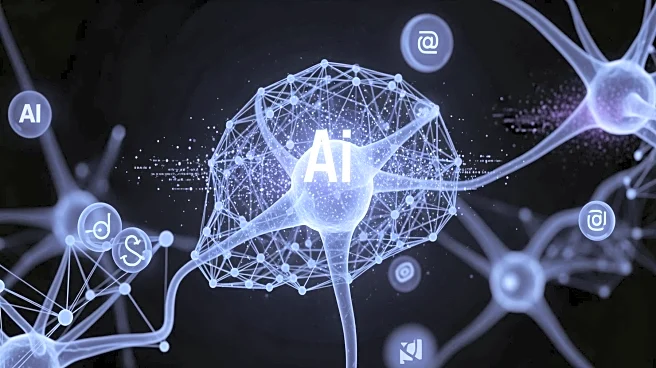What's Happening?
A groundbreaking simulation of a mouse cortex has been developed using one of the world's fastest supercomputers, Fugaku. This virtual model, created by a global collaboration including the Allen Institute,
features nearly ten million neurons and 26 billion synapses, simulating both the form and function of the brain. The simulation aims to provide insights into diseases like Alzheimer's and epilepsy by observing how damage spreads through neural networks. The project, currently under review, is set to be published in coordination with the SC25 supercomputing conference. The simulation was achieved using the Allen Institute's Brain Modeling ToolKit and Neulite, a neuron simulator that mimics real neuron activity.
Why It's Important?
This simulation represents a significant technical milestone, demonstrating the potential for larger and more precise brain models. It opens new possibilities for understanding cognition and consciousness, and for simulating diseases at a detailed level. The use of Fugaku, capable of over 400 quadrillion operations per second, highlights the role of supercomputing in advancing neuroscience research. The project aims to eventually simulate entire brains, including human models, which could revolutionize the study of brain function and disease treatment.
What's Next?
The long-term goal is to develop whole-brain models, potentially including human brains, using detailed biological data. This advancement could lead to new methods for studying brain diseases and developing treatments. The collaboration plans to expand the simulation from single brain areas to entire brains, leveraging the computational power of Fugaku and the expertise of neuroscientists worldwide.
Beyond the Headlines
The simulation's success underscores the importance of interdisciplinary collaboration in scientific research, combining neuroscience expertise with advanced computing technology. It also raises ethical considerations regarding the use of such detailed brain models, particularly in relation to privacy and the potential for misuse in areas like artificial intelligence.











